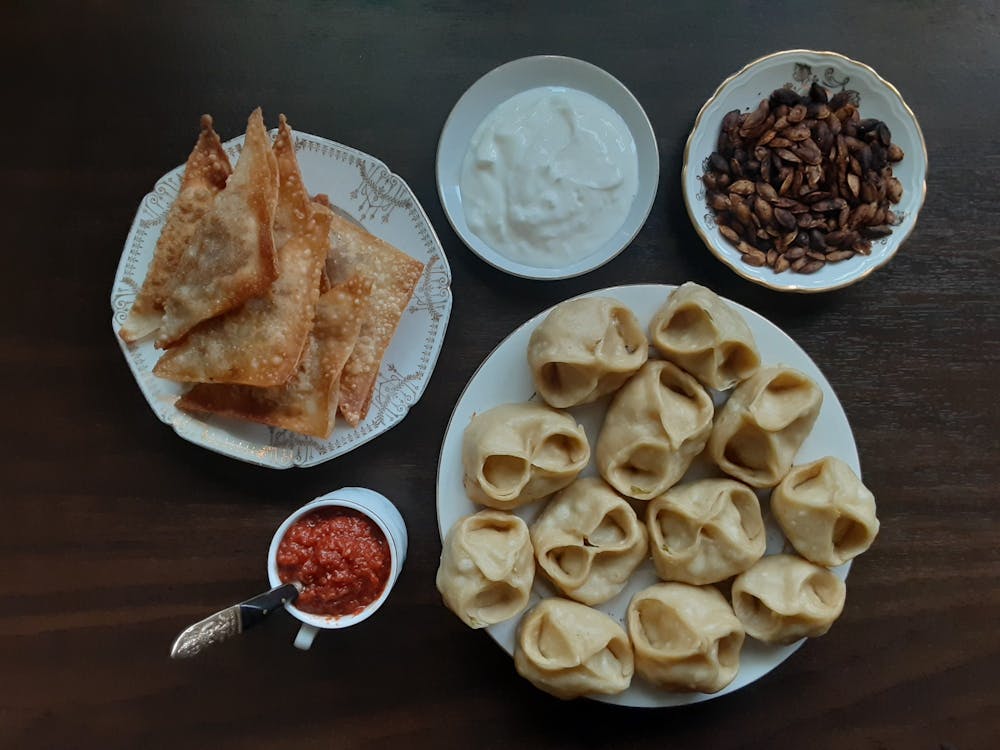While the 80-degree weather we've had this week might tempt you into thinking it’s still summer, you’d be wrong. Fall is here, as shown by the giant piles of dusty pumpkins in front of Kroger and the squash and gourds coming into seasonal abundance at local farmers markets and gardens. Savvy Instagrammers and the rest of us are buying the cutest ones to decorate dining room tables, bookshelves and front porches across the U.S.
Unfortunately, I find myself becoming more curmudgeonly with every passing year, and I wonder about the futility of it all — the water and care that went into growing each precious fruit and thousands of years of domestication — for what? So that we may briefly admire them, forget about them and then clean up their rotting carcasses in time to get out our decorative Thanksgiving corn?
I think most decorative squash has more to offer.
Instead of buying ornamental gourds Oct. 1 and composting them as they soften, why not cycle through them, using and consuming them? Instead of buying a single cute pumpkin once a year, why not recreate that experience every time you grocery shop in October? Buy a fresh one each time, eat last week’s decoration, reduce waste and keep the holiday spirit aggressively alive by eating pumpkin for every meal.
So far this fall I’ve eaten or tried to eat delicata squash, acorn squash, mini pumpkins and an egg gourd, an experience that has reminded me of an old saying: Everything is edible once. I would not recommend the egg gourd — while perhaps edible, it has almost no flesh and also the most unpleasant bitter flavor I’ve had the misfortune to encounter. All of these squashes are technically members of the same species, Cucurbita pepo, hence my assumption that I would not be poisoned. But despite this familiar relationship, there is quite a lot of variety in shape, texture and taste.
While the egg gourd was a bust, I’ve had better luck with the other varieties, using them more or less interchangeably in everything from squash mac and cheese to Central Asian manti. I bought a perfect organic pumpkin at Bloomingfoods for $1.12. It was so perfect that it hurt to cut, but a pumpkin is a food, not an ornament, and my very small pumpkin has contributed to many meals since it was sacrificed.
My favorite, good-for-midterms-stress-eating squash recipe was a simplified version of the Afghan and Bukharan Jewish snack bichak: First, caramelize an onion, then add half a grated pumpkin, salt, cinnamon, cumin, a little sugar and pepper to taste and cook until the pumpkin is done and the mixture has dried out a bit. Fold it into triangles using store-bought egg roll wrappers, a tip I got from a Tajik-American Twitter friend, and fry in a lot of oil and you’re done!
If you insist on jack-o-lanterns, which due to candles and squirrels and whatnot should probably not be eaten, please at least consider consuming the parts you cut out. Toast the seeds, toss the cutout eyes and mouth pieces in a Thai curry or cook them down into a puree for a pumpkin spice cake or chocolate pumpkin bread.
My next steps on my seasonal decor eating journey are somewhat jack-o-lantern inspired, in that they too use an entire pumpkin to great dramatic effect: a fondue cooked inside a roasted pumpkin, extravagant considering I live alone and ghapama, a classic Armenian winter dish.
While eating a whole jack-o-lantern or folding a million delicate pumpkin dumplings may be a bigger project than you’re looking to take on right now, consider the multitude of other ways to enjoy your pumpkin, squash or gourd. Think of the Native Americans who domesticated the plant and the farmers that grew them, and respect their work by ingesting every delightful bite, rather than consigning your pumpkins to the cold, dark fate of the trash bin.




